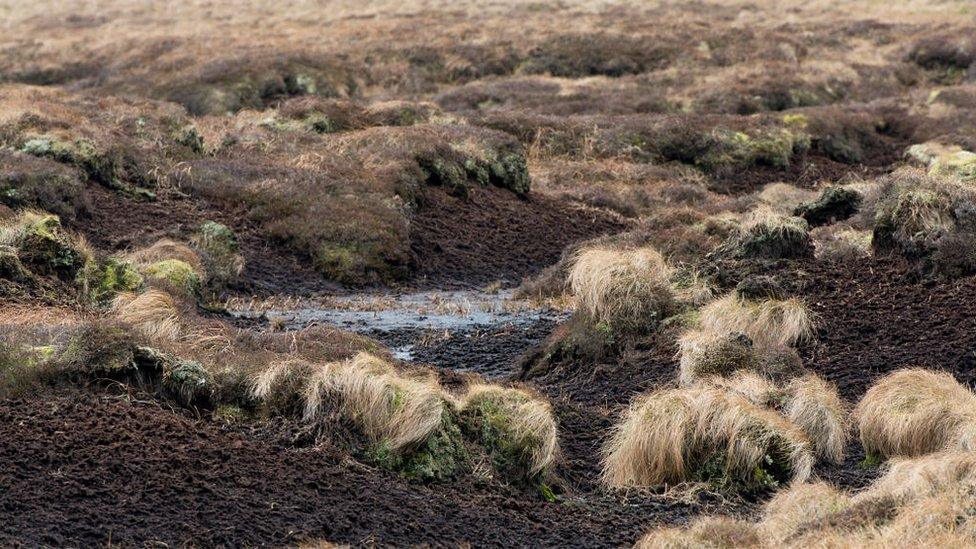Climate change: UK peat emissions could cancel forest benefits
- Published

Emissions from UK peatland could cancel out all carbon reduction achieved through new and existing forests, warns the countryside charity CPRE.
It says many degraded peatlands are actually increasing carbon emissions.
Yet, it says, there has been much more focus from the government and media on forests than on peat bogs.
The governmentâs advisory committee on climate change told ģÉČËŋėĘÖ News that it agreed with the conclusions of the analysis.
Both that committee and the CPRE are urging more ambitious action to protect and enhance peatlands.
A peat bog is a Jekyll and Hyde thing. A wet, pristine peat bog soaks up CO2 and, unlike trees, has no limit to the amount of carbon it captures. Trees only capture CO2 until they are mature.
But a dry, degraded bog â like many in Englandâs uplands â is a big source of CO2 as the carbon in the bog oxidises.
Cost effectiveness
So restoring bogs by filling up drainage ditches is a highly cost-effective way of reducing emissions.
The CPRE points out that around 18.5 million tonnes of greenhouse gas emissions come from peatlands every year in the UK.
The same amount of emissions would be captured through existing and proposed forest. But crucially that is not before 2050 to 2055 when the trees will be fully grown.
In other words, whilst forestry and peat restoration both need to be done, the best value lies with improving peat.
Ministers aim to publish a peat strategy, but this has been delayed. A government response to the CPREâs warning has been requested.
Garden peat
Environmentalists insist the government strategy must ban peat extraction for gardens. Currently, suppliers are supposed to be phasing out peat voluntarily â but campaigners say it's far too slow.
Tom Fyans from CPRE said: âThe government has paid too little attention to emissions from peatland. As things stand, they arenât even properly included in current emissions monitoring.
âThis seriously threatens the effectiveness of other nature-based solutions, like tree planting, in tackling the climate emergency.
âWe need much greater levels of investment in restoring or rewetting peatlands, and we need a strategy for a fair and managed transition to move businesses away from dependency on destructive use of peatlands.â
A Defra spokesperson said: "This Government remains dedicated to being a world leader in tackling climate change. Healthy peatlands have an important role to play in cutting greenhouse gas emissions and helping us reach our net zero target, which is why we have committed ÂĢ640m through the Nature for Climate Fund to restore 35,000 hectares of England's peatland by 2025.
"We will also phase out the use of peat in horticulture in England by 2030, and have been clear that we will consider further measures to end the use of peat once and for all."
The chief executive of the CCC, Chris Stark, said: "Peatland restoration is a no-brainer but action needs to start now. Most of the UK's peatlands are in bad shape, accounting for around 5% the UK's greenhouse gas emissions. This problem is fixable, by restoring and managing our land more sustainably. In the longer-term, well-functioning peatlands can continuously suck up CO2 from the atmosphere, unlike trees, and represent an important and potentially growing reservoir of carbon.
"Healthy peatland can also deliver additional benefits such as cleaner water and reduced flood risk."
It is estimated there are over three billion tonnes of carbon stored in the peatlands in the UK â equivalent to all carbon stored in the forests of the UK, Germany and France put together.
Only 22% of the UKâs peatlands are estimated to remain in a ânear-naturalâ state - that is when they are not contributing to global heating.
Peatlands also have a huge capacity to store carbon, flood waters and provide a haven for wildlife.
Follow Roger